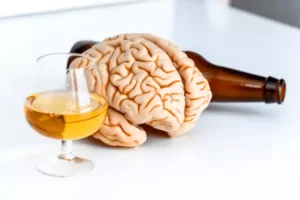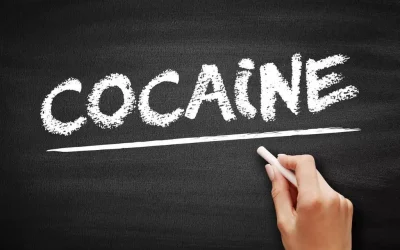
A tandem issue to tackling opioid dependency is finding safe, effective, non-addictive strategies to manage chronic pain. NIH is actively involved in building a partnership with FDA and industry to accelerate these efforts. NIH researchers are also studying the neurobiology of pain and investigating complementary drug addiction treatment therapies such as yoga, acupuncture, and behavioral therapies to treat pain. What makes opioid medicines effective for treating pain also can make them dangerous. Opioids are a broad group of pain-relieving medicines that work with your brain cells. Opioids can be made from the poppy plant — for example, morphine (Duramorph, MS Contin, others).
Quick Access Resources

The good news is recovery signs of opioid addiction is possible through professional support and medication. Treatment for opioid use disorder has evolved significantly in response to the current opioid epidemic, which means many treatment options are available to minimize withdrawal and help you sustain long-term recovery. Opioids are found in prescription pain medications and illegal street drugs like heroin. While prescription pain medications can be helpful for the short-term management of moderate to severe pain, they carry a high risk for addiction.

International Patients
- Opioids can lead to physical dependence within a short time — as little as four to eight weeks.
- Addiction training should be an essential part of all health professional education.
- This linkage activates an enzyme that converts a chemical called adenosine triphosphate (ATP) into another chemical, called cyclic adenosine monophosphate (cAMP), which in turn triggers the release of NA.
In summary, the various biological models of drug addiction are complementary and broadly applicable to chemical addictions. Long-term pharmacotherapies for opioid dependence and addiction counteract or reverse the abnormalities underlying those conditions, thereby enhancing programs of psychological rehabilitation. A third variation on the set-point change emphasizes the sensitivity to environmental cues that leads to drug wanting or craving rather than just reinforcement and withdrawal (Breiter et al., 1997; Robinson and Berridge, 2000). During periods when the drug is not available to addicts, their brains can remember the drug, and desire or craving for the drug =https://ecosoberhouse.com/ can be a major factor leading to drug use relapse. This craving may represent increased activity of the cortical excitatory (glutamate) neurotransmitters, which drive the resting activity of the DA-containing VTA neurons, as mentioned, and also drive the LC NA neurons.
- During CBT, a mental health professional helps you take a close look at your thoughts and emotions.
- The likelihood of developing dependence following opioid use is high compared with most other drugs.
- Whole-brain analysis revealed structural and functional alterations in opioid receptor-dense regions in the opioid use disorder group compared to healthy controls.
- Once the drugs are out of the person’s system, continuing treatment is recommended to avoid relapse ― resuming opioid use after quitting.
- In contrast to stimulants, heroin apparently dam-ages the PFC but not the frontostriatal loop.
Medical Detox for Opioid Withdrawal
Many people are able to achieve abstinence through therapy, medication, and support from loved ones. New formulations of naltrexone and buprenorphine allow you to receive medications just once a month through an injection. Research shows that counseling helps people stay engaged in therapy and reduces the risk of relapse. This is because it’s easy to miscalculate and use doses that they previously tolerated.
- Other brain areas in addition to the LC also contribute to the production of withdrawal symptoms, including the mesolimbic reward system.
- Opioid abuse can lead to many long-term health problems and even death.
- It can be incredibly difficult to watch a loved one experience opioid use disorder.
- Addiction to opioids — prescription pain relievers, heroin, and synthetic opioids such as fentanyl — is a national crisis.
- Particularly in the early stages of abuse, the opioid’s stimulation of the brain’s reward system is a primary reason that some people take drugs repeatedly.
At this time, the PA PDMP does not have a mechanism to collect and document patient consent required by 42 CFR Part 2. Additionally, the PA PDMP does not currently have a mechanism to separate medical records related to substance use disorder from other dispensation records. This is necessary to ensure these records are not viewable by other users specific to PA’s PDMP that are not covered under Part 2. DDAP and PA Department of Human Services to establish a mechanism to collect patient consent and relevant data. Addiction training should be an essential part of all health professional education.

Cleveland, Akron, Canton open several warming centers as temps plummet in Northeast Ohio: Here’s the list of locations
- Nurse practitioners and physician assistants need 16 additional hours of training.
- In a 5-2 ruling Tuesday, the Supreme Court said that the Ohio Product Liability Act is the law that addresses public nuisance claims.
- Drug tolerance and dependence are a result of taking any opioid drug for a long time.
- It is an important element in improving the quality of patient care, and in order to help combat the current drug epidemic, health care clinicians need up-to-date tools and technology that support appropriate prescribing of controlled substances.
- Opioids may also consist of street drugs, such as heroin or synthetic fentanyl.
Pharmacies and dispensing prescribers must submit all controlled substance (Schedules II–V) dispensation information to the PA PDMP system no later than the close of the subsequent business day after dispensing a controlled substance. A business day is any day within the standard five-day business week beginning on Monday and ending on Friday. Dispensers are encouraged to submit every day as well as on weekends if they are open for business.
Semi-synthetic opioids, such as heroin and the pain relievers oxycodone, hydrocodone, and oxymorphone, are made in laboratories by chemically processing natural opioids. Future research also needs to figure out whether these brain changes are permanent, or if they subside after a person receives treatment for their addiction, he added. The results also showed some differences between men and women when it came to brain changes linked to opioid addiction.




